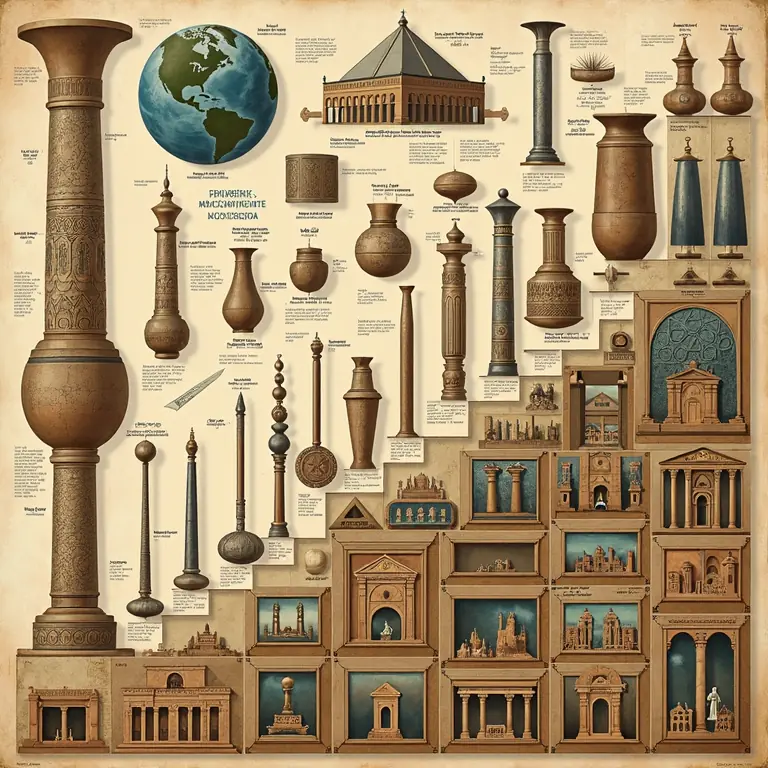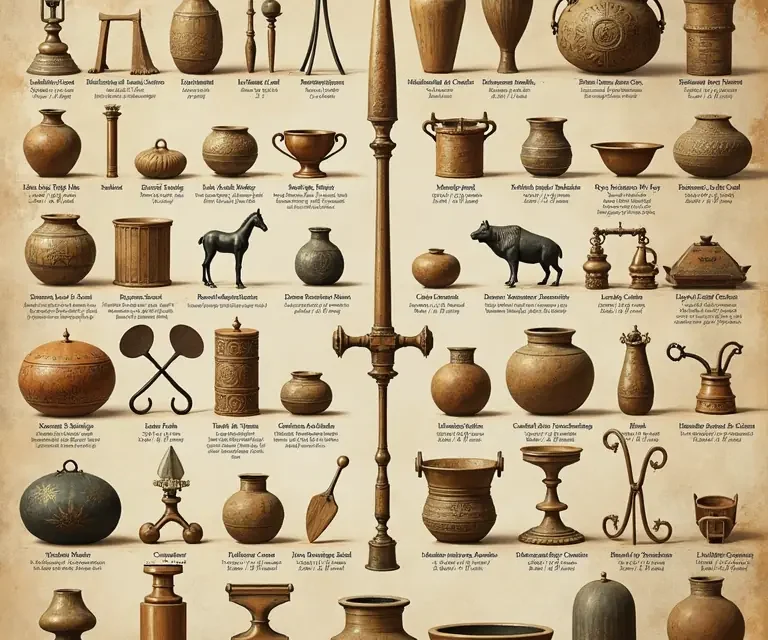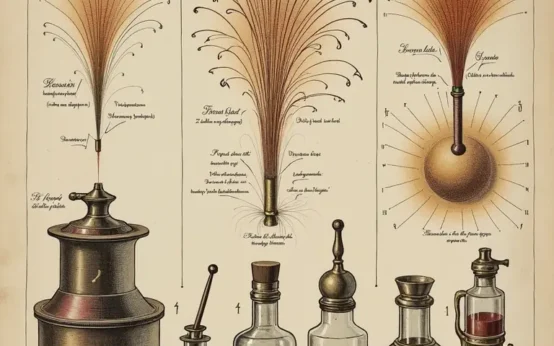Have you ever stopped to think about how we measure things? It seems so fundamental, so ingrained in our daily lives – the length of a room, the weight of groceries, the time it takes to get to work. But the history of unit measures is a fascinating journey through human ingenuity, cultural exchange, and the ever-present need to quantify the world around us. It’s a story that stretches back millennia, evolving from the practical needs of early civilizations to the standardized systems we rely on today. This article will delve into that history, exploring the diverse and often quirky origins of the units we use, and how they’ve shaped our understanding of the universe.
The Dawn of Measurement: Body Parts and Everyday Objects
In the beginning, there were no rulers, scales, or clocks. Early humans didn’t need precise measurements for most tasks. Survival depended on observation and approximation. But as societies grew and became more complex – with the advent of agriculture, construction, and trade – the need for standardized measures became crucial. The earliest units were almost invariably based on the human body. After all, it was readily available and universally understood.
- The Cubit: Perhaps the most famous of these body-based units, the cubit was roughly the length from the elbow to the tip of the middle finger. It varied slightly between cultures – the Egyptian cubit was about 52.4 cm, while the Sumerian cubit was closer to 30 cm. This difference highlights a key challenge in early measurement: lack of standardization.
- The Foot: Another intuitive unit, the foot, unsurprisingly, originated from the length of a human foot. Again, variations abounded. The Roman foot (pes) was approximately 29.6 cm, while the Greek foot was around 30.1 cm.
- The Hand: The width of a hand (usually measured across the palm) served as a unit for measuring horses (the ‘hand’ is still used today for horse height) and other large objects.
- The Finger: For smaller measurements, the finger (or digit) was used.
Beyond body parts, everyday objects also provided convenient standards. The ‘grain’ – the weight of a single grain of wheat – became a fundamental unit of mass. The ‘shekel’ (originally a unit of weight, later also a currency) was based on the weight of barley. Liquid measures were often based on the capacity of common containers, like jugs or baskets.
Ancient Civilizations and Their Unique Systems
As civilizations blossomed in Mesopotamia, Egypt, Greece, and Rome, more sophisticated – and localized – systems of measurement emerged. Each civilization developed its own unique set of units, reflecting its specific needs and cultural practices.
Egypt: The Legacy of the Nile
The annual flooding of the Nile River was central to Egyptian life, and their measurement system was deeply intertwined with agriculture and construction. Besides the cubit (used extensively in building the pyramids), Egyptians used units for area, such as the iter, and volume, like the hekat. Their system was remarkably practical, allowing them to manage land, build monumental structures, and regulate trade.
Mesopotamia: Sexagesimal Systems and Early Astronomy
The Mesopotamians, known for their advancements in mathematics and astronomy, developed a sexagesimal (base-60) number system that heavily influenced their measurement systems. This system is still visible today in our division of time (60 seconds in a minute, 60 minutes in an hour) and angles (360 degrees in a circle). They had units for length, area, and volume, often based on barley grains or specific containers. Their sophisticated astronomical observations also led to the development of units for measuring time intervals.
Greece: Geometric Precision and Philosophical Inquiry
The Greeks, with their emphasis on geometry and philosophical inquiry, sought to establish more rational and standardized units. They refined the foot and developed units for angles and areas. Greek mathematicians, like Archimedes, made significant contributions to the understanding of measurement and its applications. Their influence spread throughout the Mediterranean world.
Rome: Practicality and Imperial Expansion
The Romans, renowned for their engineering prowess and vast empire, adopted and adapted existing measurement systems. They standardized the Roman foot and mile (mille passuum – thousand paces). Roman measurements were essential for road construction, land surveying, and military logistics. However, despite their empire-wide reach, Roman units weren’t entirely uniform across all provinces, leading to continued regional variations.
The Middle Ages: Fragmentation and Local Customs
The fall of the Roman Empire ushered in a period of fragmentation in Europe. With the breakdown of central authority, local customs and units of measure flourished. This led to an astonishing variety of units, often differing from village to village. A ‘foot’ in one town might be significantly different in length than a ‘foot’ in another. This chaotic situation hampered trade and created significant difficulties for merchants and travelers.
Different regions developed their own distinct systems. In England, the system evolved from Anglo-Saxon units, incorporating influences from the Vikings and Normans. France, Germany, and other parts of Europe had their own complex and often inconsistent sets of units. The lack of standardization was a major impediment to economic development.

The Rise of Standardization: The Metric System
The need for a universal and standardized system of measurement became increasingly apparent during the Enlightenment. Scientists and philosophers recognized that inconsistent units hindered scientific progress and hampered international trade. The idea of a decimal-based system, based on natural constants, gained traction.
The French Revolution provided the impetus for radical change. In 1799, the French National Convention approved the creation of the metric system. Based on the meter (originally defined as one ten-millionth of the distance from the equator to the North Pole) and the kilogram (defined as the mass of one liter of water), the metric system offered a logical, coherent, and universally applicable framework for measurement.
The metric system’s decimal nature made calculations much simpler than dealing with the complex fractions inherent in older systems. It was initially met with resistance, particularly in countries with deeply entrenched traditional units. However, its advantages gradually became undeniable. Over the 19th and 20th centuries, the metric system spread across the globe, becoming the dominant system of measurement in science, industry, and commerce.
The Imperial System: A Persistent Legacy
Despite the global adoption of the metric system, the Imperial system (derived from British Imperial units) remains in widespread use in the United States, Liberia, and Myanmar. The Imperial system, with its units like inches, feet, yards, and pounds, is a descendant of the older English units. Its persistence is largely due to historical factors and cultural resistance to change. The conversion between Imperial and metric units can be cumbersome, highlighting the advantages of a decimal-based system.
Modern Units and Fundamental Constants
Today, our understanding of measurement extends far beyond practical needs. Modern physics has revealed fundamental constants that define the universe, providing a basis for the most precise measurements possible.
- The Speed of Light: Defined as exactly 299,792,458 meters per second, the speed of light is a fundamental constant used in defining the meter itself.
- The Planck Constant: A cornerstone of quantum mechanics, the Planck constant is used in defining the kilogram.
- The Elementary Charge: The fundamental electric charge is now used to redefine the ampere, the unit of electric current.
In 2019, the International System of Units (SI) underwent a major revision, redefining the base units based on these fundamental constants. This shift ensures greater stability and accuracy in measurements, as the definitions are no longer tied to physical artifacts that can change over time.
Beyond Length, Mass, and Time: Specialized Units
The world of unit measures extends far beyond the familiar units of length, mass, and time. Numerous specialized units have been developed to quantify a vast array of phenomena.
- Color: Units like the candela measure luminous intensity. For a deeper dive into the science of color, check out the history of pigments.
- Sound: The decibel (dB) measures sound intensity.
- Radioactivity: The becquerel (Bq) and the sievert (Sv) measure radioactivity and radiation dosage, respectively.
- Geology: The Mohs hardness scale measures the resistance of minerals to scratching. Explore the fascinating world of minerals.
- Information: The bit and the byte measure digital information.
The Future of Measurement
The quest for more precise and reliable measurements continues. Scientists are constantly pushing the boundaries of measurement technology, developing new techniques and instruments to probe the deepest mysteries of the universe. Quantum metrology, for example, leverages the principles of quantum mechanics to achieve unprecedented levels of accuracy.
Furthermore, the development of new materials and technologies will likely lead to the creation of even more specialized units to quantify emerging phenomena. The story of unit measures is far from over; it’s a dynamic and evolving field that reflects our ongoing efforts to understand and quantify the world around us. The art of mapping, for instance, relies heavily on accurate measurement; discover how mapmaking shaped our worldview. And don’t underestimate the simple joy of play, where even seemingly simple toys offer lessons in physics – explore the physics of play! Finally, consider the evolution of how we record information – a brief history of writing technologies highlights how measurement, in terms of character space and line length, has played a role.
From the humble cubit to the sophisticated units based on fundamental constants, the journey of measurement is a testament to human curiosity, ingenuity, and the enduring need to make sense of the universe.


 The Curious Mechanics of Automaton Birds: A History of Feathered Clockwork
The Curious Mechanics of Automaton Birds: A History of Feathered Clockwork  The Curious Mechanics of Celestial Globes: Mapping the Heavens in Miniature
The Curious Mechanics of Celestial Globes: Mapping the Heavens in Miniature  The Surprisingly Consistent Science of Historical Weather Vanes – Art, Meteorology & Directional Lore
The Surprisingly Consistent Science of Historical Weather Vanes – Art, Meteorology & Directional Lore  The Unexpectedly Consistent Science of Early Firework Composition: Alchemy, Aesthetics & Aerial Displays
The Unexpectedly Consistent Science of Early Firework Composition: Alchemy, Aesthetics & Aerial Displays  The Surprisingly Consistent Logic of Traditional Herbal Remedies: Beyond Folklore, a History of Observation
The Surprisingly Consistent Logic of Traditional Herbal Remedies: Beyond Folklore, a History of Observation  The Surprisingly Consistent Science of Early Map Projections: Distorting the World to Understand It
The Surprisingly Consistent Science of Early Map Projections: Distorting the World to Understand It